Safety Topics in the Workplace Confined Spaces: Confined spaces are high-risk work areas that have killed workers and would-be rescuers. Very specific rules need to be followed by workers who work in and around these spaces. Here are some basic guidelines that you should follow. Click on each one to learn more.
- Eliminate and Monitor Hazards in the Environment
- Wear Personal Protective Equipment
- Have Proper Lighting and Ventilation in the Confined Space
- Assign an Outside Attendant
- Always Be Prepared for a Rescue
- Get Proper Training
You might also be interested in the following topics:
What Is the Definition of a Confined Space?
What Types of Hazards Can Confined Spaces Pose?
What Does Confined Space Training Include?
Where Can You Take Confined Space Training?
If you are looking for proper Confined Space training in Ontario, contact us.

Safety Topics in the Workplace Confined Spaces: Learn how to stay safe
Safety Topics in the Workplace Confined Spaces
1. Eliminate and Monitor Hazards in the Environment:
Before anyone enters a confined space, you should try to control or eliminate any hazards that may be present in the space such as harmful chemicals or gases. In addition, you should use equipment that will monitor the atmosphere in the space for substances such as hazardous gases that you can’t smell while you are inside the space.
2. Wear Personal Protective Equipment:
You should always wear proper personal protective equipment (PPE) when you are working or performing a rescue inside a confined space. You need to be properly trained on the use of your PPE so that you know how to put it on and use it correctly.
Your PPE should also fit you properly. For example, your respirator needs to be fitted to your face and you should be clean-shaven in order for there to be a proper seal.

Safety Topics in the Workplace Confined Spaces: Make sure you PPE fits properly
3. Have Proper Lighting and Ventilation in the Confined Space:
Ensure that the lighting in the confined space is sufficient so that you are able to safely perform your tasks. In addition, the space needs to be well-ventilated. Forced-air ventilation is an effective way to remove or dilute contaminants that might be present in the space.
4. Assign an Outside Attendant:
While you are working in a confined space, there should always be an attendant outside of the space whose job is to monitor the safety conditions. They need to be there to assist you in case of an emergency situation or, if necessary, call for extra assistance.
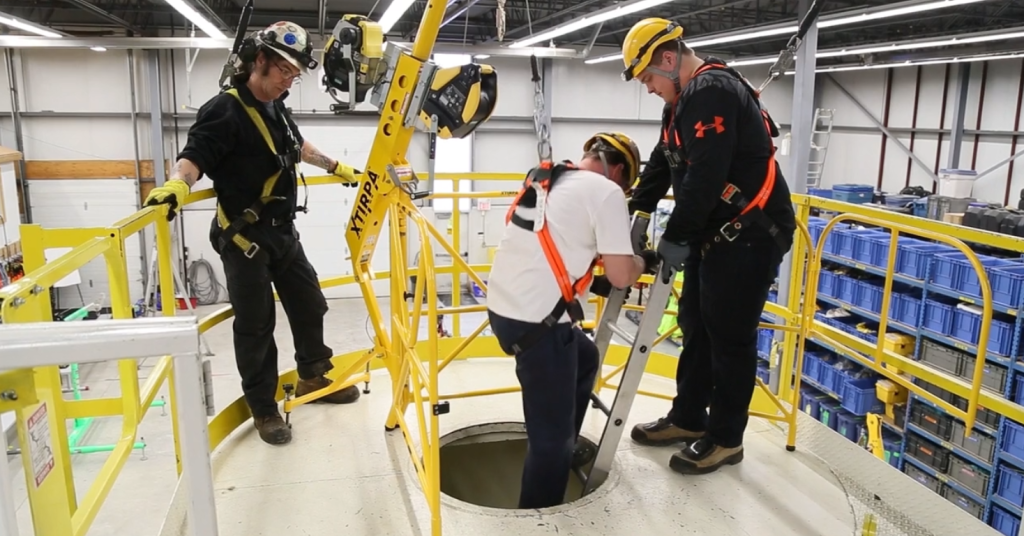
Safety Topics in the Workplace Confined Spaces: Always assign an outside attendant
5. Always Be Prepared for a Rescue:
Because entering and working in confined spaces is often extremely dangerous, you must always be prepared to perform a rescue. You should have a good rescue plan laid out prior to any confined space entry and have the right equipment readily available just in case a rescue is required.
6. Get Proper Training:
Getting proper training for both confined space entry and confined space rescue is one of the most important safety steps to take. In fact, employers in Ontario are required by law to make sure that any worker who “enters a confined space or who performs related work receives adequate training to perform the work safely, in accordance with the relevant plan.”
Workers need to be able to recognize the hazards associated with entering a confined space and know how to safely work in a confined space.
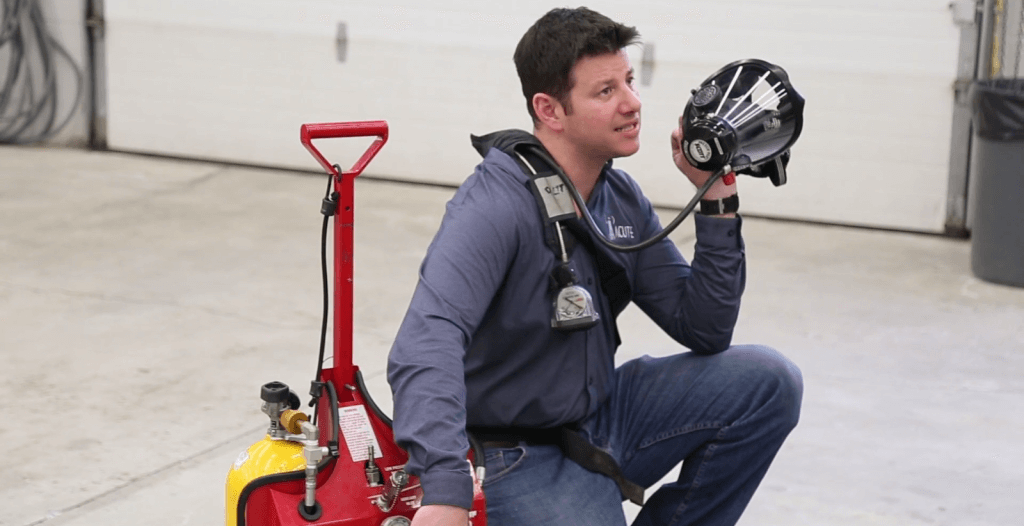
Safety Topics in the Workplace Confined Spaces: You must be properly trained
What Is the Definition of a Confined Space?
A confined space is any fully or partially enclosed space that has not been designed or constructed in such a way that supports continuous human occupancy and a space that might contain atmospheric hazards due to a number of factors, including:
- Its construction
- Its location
- Its contents
- The work that is performed inside it
What Types of Hazards Can Confined Spaces Pose?
There are four main types of hazards that could cause an accident in a confined space. These include:
- Flammable atmospheric hazards: These types of hazards occur when flammable or explosive gases cause a fire or explosion.
- Toxic atmospheric hazards: These types of hazards includes asphyxiation when there are low levels of oxygen because the oxygen has been replaced by other gases like carbon dioxide or nitrogen or the inhalation of harmful toxic gases, vapours, fumes or dust.
- Physical hazards: Physical hazards could include falling from a height, being hit by a falling object, or being trapped by equipment.
- Engulfment: Engulfment refers to being immersed in oil, water, other liquids, or free-flowing solids like dirt or rocks that can lead to drowning or asphyxiation.

Safety Topics in the Workplace Confined Spaces: There are four main types of hazards
What Does Confined Space Training Include?
There are two types of confined space training courses: Confined Space Entry Awareness and Confined Space Rescue.
1. Confined Space Entry:
This training program will familiarize you with the requirements of Ontario Regulation 632/05 – Confined Spaces. Furthermore, the training program is intended to provide entrants, attendants and competent persons the skills and training required to recognize confined space entry risks and how to establish measured and corresponding controls.
With ACUTE’s Confined Space Training you will have the opportunity to become familiar with, inspect and use the most up-to-date equipment in terms of gas detection, air packs, and confined space rescue. You will get to actually use this equipment in your training to help you determine what you might want to purchase in terms of your own confined space entries.
ACUTE offers Confined Space Entry training to help keep you safe
Training program topics include:
- Confined space entry accidents
- Regulation 632/05 – Confined spaces overview
- Statutory and regulatory responsibilities
- Confined space documents
- Recognizing confined space entry hazards
- Assessing risk
- Controlling hazards
- Evaluating control measures
- Air quality monitoring
- Ventilation and purging
- Lock-out/Tag-out
- Rescue planning

2. Confined Space Rescue:
This training program builds on the content of the Confined Space Entry Awareness course to train you on the safety considerations and how to safely perform rescues from confined spaces.
Training program topics include:
- Regulation 632/05 – Confined Spaces rescue obligations and prohibitions review
- Protection of personnel from hazards within the confined space
- Size-up of existing and potential hazards in confined space emergencies
- Risk assessment
- Hazard control hierarchy
- Evaluation of controls
- Plan and implement a confined space rescue operation
- Management of the physical and psychological challenges in confined spaces
- Rescue types
- Use of victim packaging devices
- Proper lifting techniques
- Use of respiratory protection equipment and when such equipment is required for a rescue operation
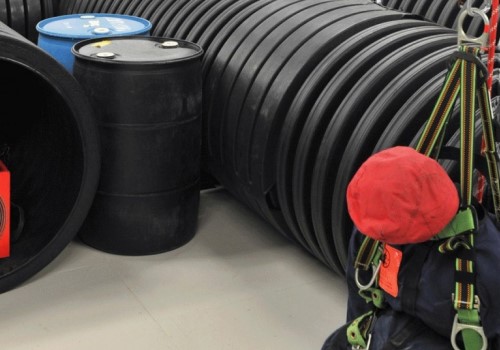
Where Can You Take Confined Space Training?
You can choose to either take your Confined Space training at our world-class facility or if you prefer, we can come to your site. Our training facility features:
- Industry-standard health and safety equipment and technologies
- Simulation areas for a full suite of training programs (i.e. working at heights, confined space, and hazardous materials)
- Classroom facilities for lecture and technical training delivery
- Human dummies for confined space rescue and hazardous material controls
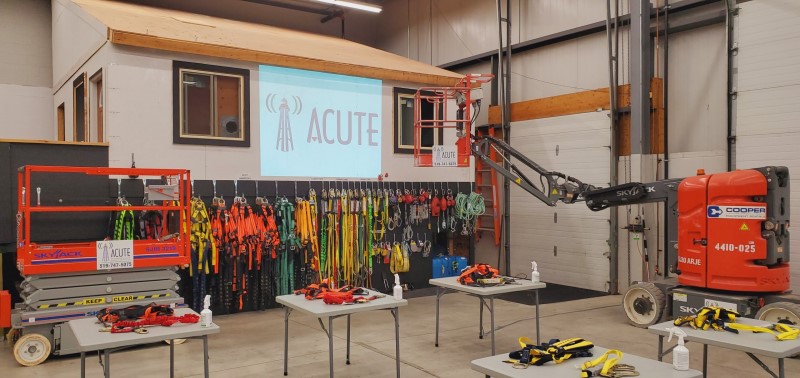
You can take your training at your facility or ours
You can trust ACUTE for the best safety training possible, including confined spaces training. ACUTE’s experienced team members have been serving safety professionals for over 20 years. You can rely on ACUTE for hands-on, physically distanced, practical safety training to keep your employees safe in the workplace. ACUTE is dedicated to workplace safety and understands the importance of course and training provider approval. Why get workplace safety training with ACUTE? Here are just some of the benefits of working with ACUTE:
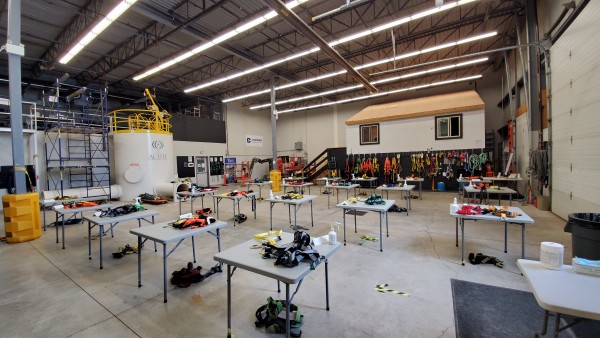
- Open Door Instructor-Student Partnership – ACUTE’s training services emphasize client participation. Staff foster relationships with clients and serve as a touchstone for advice anytime moving forward.
- Serving Your Team and Industry – With a vast array of clients in the manufacturing, construction, health, academic, and government sectors, ACUTE brings the best safety practices from across the spectrum to your workplace.
- 100 Years Combined Experience – ACUTE provides comprehensive health and safety training, on-site safety services, and consulting services. With over 100 years of combined experience, our company staff offer more than theoretical or abstract ideas. ACUTE offers solutions.
- Track Record of Success – ACUTE is rated 4.9/5 stars on Google reviews, demonstrating a commitment to our clients, quality, and passion for training.
Check out our course calendar for times and dates of our courses.
What Our Customers Are Saying…
“Acute has been a staple in supporting my companies over the years and have always delivered quality amd dependable service. Training programs are top shelf and a great facility for practical application. couldn’t recomend them more. keep up the great work folks.”
“Went in for the lockout/tagout class as required by my employer. The instructor was well prepared and knowledgeable on the subject matter and also provided real life situations regarding the subject.”
“I work at the University of Guelph as an arborist. Ron Campbell provided a small socially distanced group and myself with working at heights training. Ron has a wealth of knowledge and kept everyone engaged with many “real life” examples of working at heights scenarios and facts. We have also received elevated work platform training with Patrick from Acute training. Patrick is also a very friendly, knowledgeable and engaging professional trainer. I truly believe that the best trainers are those with practical experience and the trainers at Acute have that locked down.”

